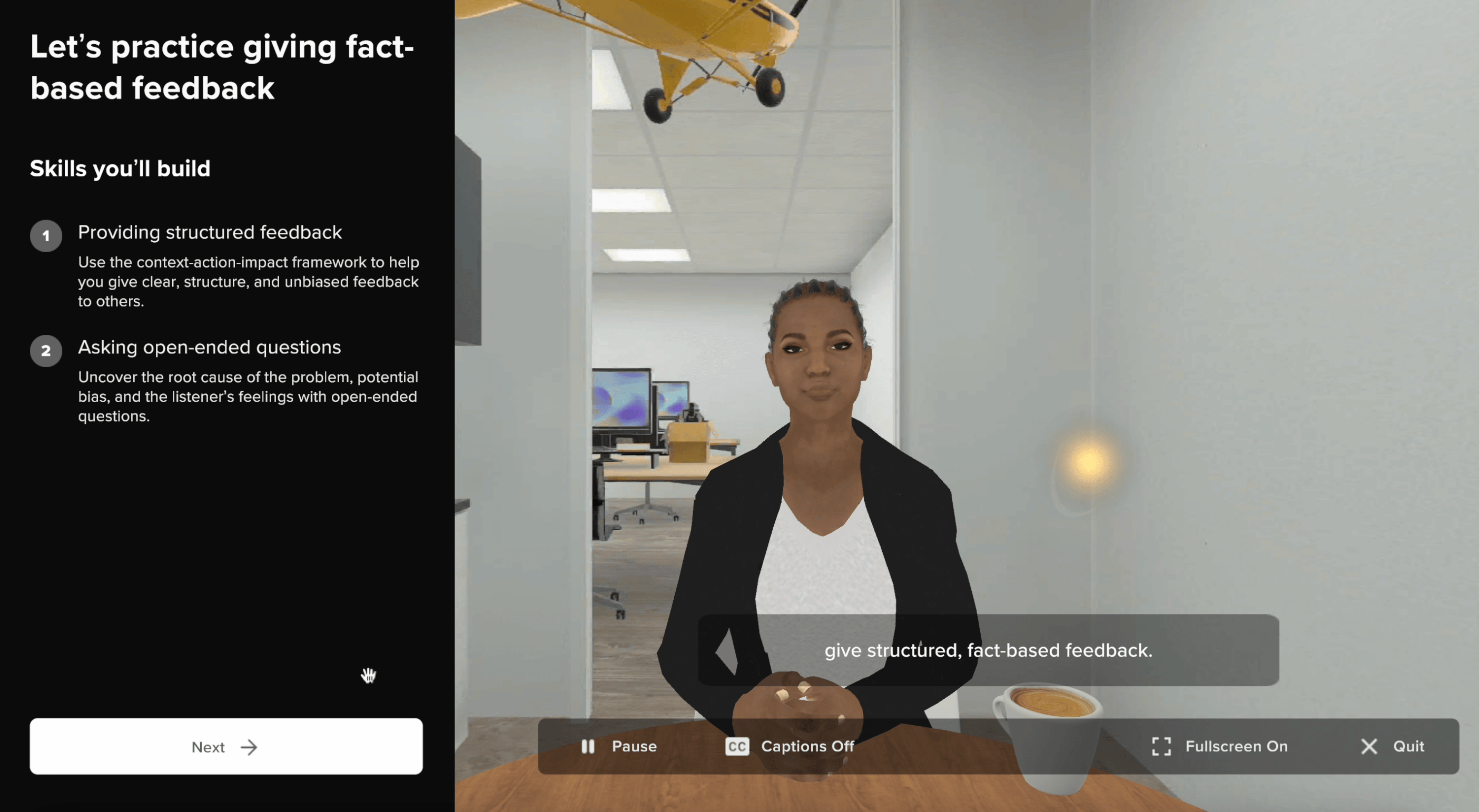- Talent Development
Mastering Effective Feedback: Tips for managers
Creating a positive feedback environment is crucial for fostering a culture of growth and improvement within your team. By creating an atmosphere where feedback is welcomed and valued, you encourage open communication and empower your employees to take ownership of their development.
To create a positive feedback environment, start by providing regular and timely feedback. Make it a point to recognize and appreciate your employees’ accomplishments and efforts. This not only boosts morale but also reinforces positive behavior. Additionally, be open to receiving feedback from your team members. Actively listen to their suggestions and concerns, and show them that their opinions are valued.
Another important aspect of creating a positive feedback environment is being respectful and constructive. Avoid using negative or hurtful language and focus on providing actionable and specific feedback. Remember to acknowledge the strengths of your employees while addressing areas for improvement. This helps to build trust and maintain a positive working relationship.
Practical Tips on How to Give Feedback to an Employee
Understanding how to give feedback to an employee effectively requires mastering a few key principles. Here are the essential tips:
Being Specific and Constructive
When giving feedback, it is important to be specific and constructive. Vague or general feedback can leave employees confused and unsure of what they need to improve on. Instead, focus on providing clear and specific examples of both positive and negative behaviors or outcomes.
Start by clearly stating the behavior or outcome you are addressing. Use specific examples to illustrate your points and explain why it is important. This helps employees understand the impact of their actions and gives them actionable steps to improve.
In addition to being specific, feedback should also be constructive. Instead of criticizing or blaming, focus on providing guidance and support. Offer suggestions for improvement and help employees develop a plan to address any areas of concern. By framing feedback in a constructive manner, you create an environment where employees feel empowered to grow and develop.
Remember, being specific and constructive in your feedback helps employees understand expectations and make meaningful improvements. Now that we’ve discussed the importance of being specific and constructive, let’s dive into how to give feedback to an employee in a way that encourages two-way communication.
Encouraging Two-Way Communication
Feedback should be a two-way conversation between you and your employees. Encouraging open and honest communication helps to build trust, strengthen relationships, and foster a collaborative working environment.
Start by creating opportunities for dialogue. Schedule regular check-ins with your employees to discuss their progress, challenges, and goals. Actively listen to their input and encourage them to share their thoughts, ideas, and concerns. This not only helps you gain valuable insights but also shows your employees that their opinions matter.
During feedback conversations, ask open-ended questions to encourage employees to reflect on their performance and provide their perspective. This promotes self-awareness and helps them take ownership of their development.
Furthermore, be receptive to receiving feedback from your employees. Actively listen to their suggestions and concerns, and be open to making changes based on their feedback. This demonstrates that you value their input and are committed to creating a supportive and inclusive work environment.
By encouraging two-way communication, you create a feedback culture that fosters mutual respect, collaboration, and continuous improvement.
Setting Clear Expectations
Setting clear expectations is essential for effective feedback. When employees know what is expected of them, they can align their actions and behaviors accordingly.
Start by clearly defining performance expectations and goals. Communicate these expectations to your employees and ensure they have a clear understanding of what is expected from them. Provide them with the necessary resources and support to meet these expectations.
In addition to performance expectations, provide clear guidelines on how feedback will be given and what employees can expect from the feedback process. This helps to create a transparent and consistent feedback culture.
Regularly check in with your employees to assess their progress towards meeting expectations. Provide feedback and guidance along the way to help them stay on track. By setting clear expectations, you create a framework for feedback that promotes accountability and growth.
Following Up and Providing Support
Following up and providing support is a critical part of the feedback process. It shows your commitment to your employees��’ growth and development and helps them make meaningful progress. 84% of employees who say their manager supports their career goals also feel “committed” — they like their work and care about their career; often put in additional effort to make sure they do a good job for their company, support their team, and serve their customers; and they’re happy to go above and beyond at work when needed.
After giving feedback, follow up with your employees to see how they are doing. Ask them about their progress and provide any additional support or resources they may need. This demonstrates that you are invested in their success and are there to support them.
In addition to follow-ups, provide ongoing support and guidance to help employees improve. Offer training opportunities, mentorship, or coaching to help them develop the skills and competencies they need to succeed. Regularly check in with them to offer guidance and address any challenges they may be facing.
By following up and providing support, you create a feedback loop that enables continuous learning and improvement.
Building Connected and High-Impact teams
Creating a positive feedback environment is not just a managerial task but a fundamental element that shapes the culture and effectiveness of a team. By focusing on regular, specific, and constructive feedback, and by fostering an open dialogue, leaders can build trust, enhance employee engagement, and drive continuous improvement.
Emphasizing respect, recognition, and mutual communication ensures that feedback is both empowering and actionable, setting a clear path for personal and organizational growth. Moreover, by setting clear expectations and providing consistent follow-up and support, managers establish a robust framework for development that aligns individual achievements with organizational goals. Ultimately, the commitment to a positive feedback culture not only enhances performance but also nurtures a collaborative and supportive workplace where every member is motivated to excel and contribute to their fullest potential. Start today by applying these strategies on how to give feedback to an employee and observe the transformative impact on your team dynamics.









